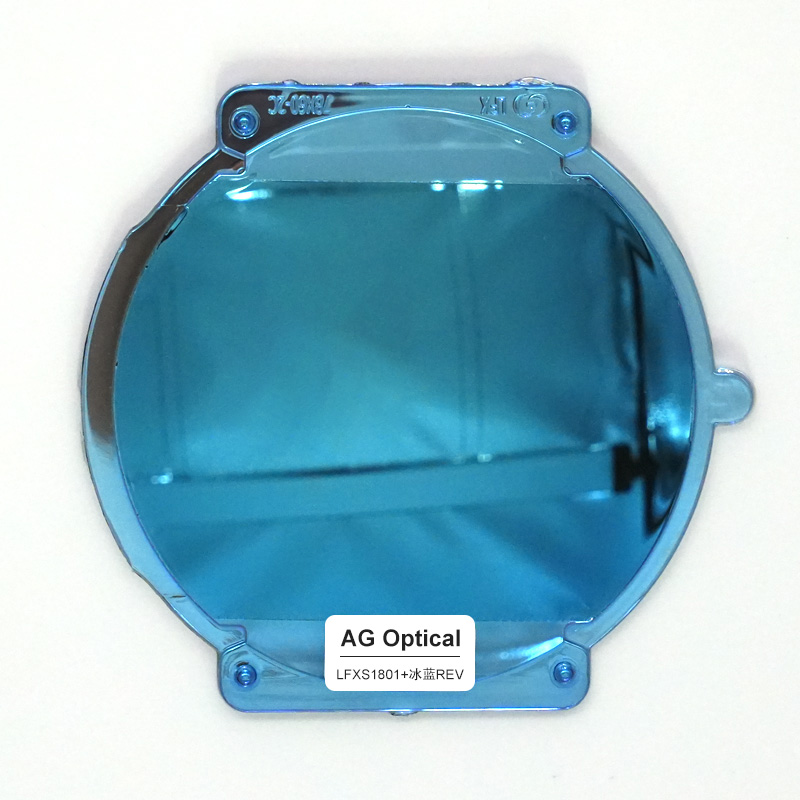Tips for purchasing anti-blue light glasses
As the concept of blue light damage is recognized by more and more consumers, and the use of blue light goggles in the field of clinical ophthalmology is gradually increasing, and there are endless brands of anti-blue light glasses on the market, so how can you choose a pair for yourself? Satisfied anti-blue light glasses, how to identify counterfeit products on the market, here, the editor provides some experience for online shoppers to share.
At present, the anti-blue light glasses on the market are roughly divided into two categories:
One type is myopia anti-blue light lenses with anti-blue light film added to traditional optical lenses. The production standards are GB10810.1-2005, GB10810.2-2006, GB10810.5-2012, QB2682-2005
One type is the anti-blue light flat lens with special sunglasses as the production standard. It can basically meet the needs of various blue light protection groups. The production standards are mainly QB2457-1999, GB10810.3-2006, EN 1836 2005+A1:2007.

Anti-blue light glasses? Which one is what we need.
This may be the first problem faced by many consumers. With so many brands on the market, which anti-blue light glasses should I choose? Here I will give you tips.
1 Consumers themselves have myopia, presbyopia, and hyperopia. If the fundus condition is good and myopia is low, they usually spend less time using computers and smartphones. It can be considered that you can directly choose to buy anti-blue light lenses that can be used for myopia. This type of lens is basically made by adding an anti-blue light reflection film to traditional optical lenses. , low color difference.
2 Consumers themselves have myopia, presbyopia, and hyperopia. If the fundus condition is not good or high myopia is high, it is recommended to use the clip in the anti-blue light plain lens (directly clamped on the existing glasses) or the set lens (directly Put it on your existing glasses), this type of lens is characterized by a relatively high anti-blue light effect. For some patients who can accept chromatic aberration, the visual fatigue is obviously relieved after wearing it, and the blue light protection can reach 97% and above (380-500nm).
3 For people with ophthalmic diseases, such as typical people with fundus diseases: macular degeneration, hemorrhage, diabetic retinopathy, patients with visual fatigue, patients after ophthalmic surgery, etc., they need to pay more attention to the impact of blue light damage and glare on vision than normal people. It is recommended to choose full Bag style goggles.
4 People with high visual quality requirements (Blutech) and some special groups, such as graphic designers, people with low tolerance to color design and chromatic aberration, are recommended to wear comprehensive anti-blue goggles. The typical feature of this type of anti-blue ray glasses is almost no chromatic aberration , while achieving 410NM anti-blue light effect, suitable for indoor long-term cooperation or going out.
Discrimination and analysis of anti-blue light glasses, how to identify fakes, and the difference from traditional driver lenses? This is also what consumers are very concerned about. The editor summarizes 2 points here, and consumers can judge based on these when purchasing.
1 "Look", what to look at, look at the color of the lens, look at the test report.
In terms of color, all anti-blue light lenses will have a certain color, concentrated in champagne, light yellow, orange, and brown. If all colorless lenses advertise that they can resist blue light, it is basically a lie. In other words, if the lens looks colorless, there must be a slight color difference after consumers wear it, which is normal in theory, because filtering blue light means that the spectrum received by the eyes is incomplete compared with the natural spectrum Yes, there will be chromatic aberration, no matter how much it is, it depends on the perception range of consumers.
2 Differences from night vision lenses and driver lenses. On the surface, driver lenses and night vision lenses also appear light yellow, so is it the same as anti-blue light lenses (mostly light yellow)?
The answer is no. I personally tested it. Even if the lens color is the same, the anti-blue light effect may be very different. The test method is very simple. I will introduce a blue light barrier tester to everyone. Just put the lens on the blue light In the middle of the barrier tester, press the blue light emitting button to see whether the color of the acrylic plate behind is blocked or not.
3 "Look", consumers can read the test report of the manufacturer.
If it is the first type of myopia lens, the detection standard of anti-blue light can basically check the spectral transmission diagram of the product.
If it is the second type of sun lenses, directly look at the blue light protection special item on the test report, the test standard EN1836 2005+A1: 2007.
